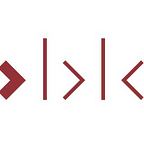Humanitarian Disasters in the Networked Age
Do increases in innovation and technology really lead to improved humanitarian aid?
by Dave Talbot and Donica O’Malley
Communications technologies, apps and data-analytics are often touted as humanitarian tools that can speed assistance during natural disasters and provide better responses to famine, government crackdowns, and even genocide.
In realty, the full effects of such interventions are often poorly understood and some can trigger “secondary Big Data disasters,” a Harvard researcher argues. He adds that what’s needed now is a rethinking of humanitarian technological interventions through the lens of human rights.
Nathaniel Raymond, founding Director of the the Signal Program at the Harvard Humanitarian Initiative (HHI) of the Harvard Chan School of Public Health, described the issue at a recent lunch event organized by the Berkman Klein Center. The talk was relevant to the Center’s Ethics and Governance of AI Initiative.
Raymond spent the past 15 years working as a humanitarian aid worker and human rights investigator, largely with Oxfam America. He criticized what he called the “humanitarian innovation narrative,” which assumes that increases in innovation and technology will lead to improved humanitarian aid. In fact, he said, there is reason to doubt this narrative.
He described traveling to Biloxi, Mississippi in 2005, three days after Hurricane Katrina made landfall. He visited a primarily African-American neighborhood and noted that the local population was receiving no aid whatsoever. Meanwhile, in another part of Biloxi, generators were humming and a tractor-trailer full of washing machines was up and running.
The difference was partly due to the fact that people in the latter areas had cellphones and smartphones, and thus could call attention to their needs and problems, which led to the response and resulting media coverage. “We were seeing ‘digital invisibility,’” he said. “The assessment for that [disaster] response was only as good as the networked connectivity of the population. And there was a racial and economic disparity in terms of how federal and state authorities were seeing that population.”
Raymond said that in the past 12 years this sort of problem he saw in Biloxi “has only gotten worse.” In Kenya in 2007, the Ushahidi social media platform allowed people to use text-messaging to report instances of election-related violence, which were then placed on a web-based map. This exposed examples of violence but also may have revealed information about who was making the reports, putting them in jeopardy.
Similarly, if a repressed population is using technology to cry for help, but potential responders are not in a position to respond quickly, the cry for help can itself trigger an attack. And repressive governments can use the same networks to spread disinformation or even to launch cyberattacks.
Humanitarianism has gone through several transformations since its inception in the mid-nineteenth century, when the International Committee of the Red Cross was formed to aid injured soldiers during the Napoleonic Wars. Now it’s time for another rethinking, he said.
“Last year we took the ‘no innovation challenge;’ we decided as a lab to stop innovating. We realized the big innovation wasn’t technology — it was rights,” he said. He added: “The first step is to consider rights, then standards and ethics then think about how you operationalize it.” When you do that, people come into focus.
As a start of a response to these issues, Raymond’s lab has developed the Signal Code, described as a “human rights approach to information during crisis.” The code identifies five rights: the right to information; the right to protection; the right to privacy and security; the right to data agency; and the right to rectification and redress. The Signal Program hopes that the code will be the foundation to create a revised humanitarian doctrine in this technological era.
“Where we are going now is into either a Golden Age of new law a new regulation or we are going into a post normative world of the disintegration of the normative frameworks forged in the 19th into the 20th century out of World War II,” he said. “We are moving to a time, because of data, where the word humanitarianism may not mean anything anymore.”
Raymond served in multiple roles with Oxfam America and Oxfam International, including in Afghanistan, Sri Lanka, Ethiopia, and elsewhere. He has published multiple popular and peer-reviewed articles on human rights, humanitarian issues, and technology in publications including the Georgetown Journal of International Affairs, the Lancet, the Annals of Internal Medicine, and many others.
Watch the video of the talk on the Berkman Klein Center website.
